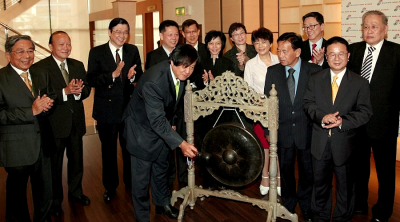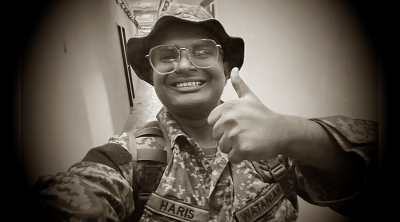Everywhere I look online, there seems to appear a proverbial man wagging his finger at me: “How dare you not be extremely scared of the threat posed by AI?”
Many of these articles read like we are already living in a post-apocalyptic world in which AI (artificial intelligence) is the dominating and superior race.
While it seems undeniable (based on what the experts say) that there is cause for alarm, I wonder if it is premature to exclusively jump to the worst possible conclusions, even if it means we get to work in preventing those scenarios.
At the risk of sounding another alarm bell, what are we to make of technology that arrives not only to optimize and improve human life but also to rob humans from our sources of joy and expression?
A few months ago, before ChatGPT took off, AI-generated images and artworks became a global phenomenon on social media.
Certain creative AI tools have been trained on replicating specific art styles and movements, the results of which impressed users who created what they felt like were their own versions of Dali-esque nightmare paintings, or portraits as though they had been painted by Leonardo Da Vinci.
Even if AI can do the same job as some of my favorite artists and writers, I do not see it as an all-consuming threat because of which demand for human creators disappears altogether.
But that’s simply the worst-case scenario avoided.
Valid concerns about the ecosystems in which creative professionals exist and what that will look like as AI continues to evolve have to be addressed.
Humans have consistently demonstrated the tenacity needed to work in tandem with developing technologies and push creative boundaries.
The invention of the camera, and its increasing ability over the decades to visually capture reality, understandably had an impact on the world of art. But that did not drive realistic painting, as an art style, out of fashion at all.
In fact, realistic paintings continue to be revered by certain audiences for the craftsmanship, skill, technique, and labor they represent.
But, simultaneously, as the domination of realistic artworks declined, creatively inclined individuals pushed the boundaries of their imagination.

The existence of photography allowed art to be much more than just a representation of reality.
Art forms and styles emerged, which allowed people to stray away from the strictness and discipline of realism, but also led to works being produced specifically by taking advantage of the new tools and technologies available.
The artwork of Andy Warhol — emblematic of the Pop Art movement — in producing screen prints of Marilyn Monroe in technicolor is a great example.
The current contemporary art scene also produces work that would have been difficult for us to imagine in the absence of technology during earlier generations.
But the one area which seems especially vulnerable to the explosion of AI is writing.
The most recent shift in this industry took place with the proliferation of OTT platforms and the rise of increasingly formulaic, mass-produced content.
Great storytelling will continue to be valued for the foreseeable future, but the sizable market that exists for unoriginal content (or content that can seemingly be produced by AI) is concerning.
Already there are books selling well online which have been primarily “authored” by ChatGPT.
The writing industry has been underfunded and seen as an impractical choice for young people to choose as a place of employment.
I write this article at the age of 27, still fully armed with the dream to continue pursuing a writing career despite having a full-time job in a different industry.
Every day, I consciously choose to hold onto that dream, which symbolizes a small act of personal resistance and victory.
It is that same dream and determination that prevents me from seriously worrying about the future of writing (for humans).
We face challenges today that force us to adopt a bleak outlook. But it is important that we practice openness and willingness to impact change in the face of these issues.
Humans — especially those at key authoritative positions — have historically failed to respond with the foresight needed to comprehend even the most imminent dangers to the human race, particularly felt by the unmissable impacts of climate change.
So now I ask myself, what can we do right this time? I acknowledge that so much is out of my control; my interaction with AI goes merely so far as asking ChatGPT questions that I am too lazy to find the answers to on Google.
But even within our little bubbles, I have seen so many individuals give in to panic and pessimism regarding various global issues over the years.
As a part of the newer generations, we have so often resorted to feeling helpless in the face of unacceptable realities; a cause that has been attributed to declining mental health.
For whatever reason (and perhaps the reason is evolutionary instincts of survival), humans have a tendency to dwell on the negative — whether it’s the way news is covered or how sci-fi stories are imagined.
In this developing AI saga and circular conversation, we need to find a middle-ground narrative which exudes not only worries but also one in which we learn to coexist with our problems and keep working towards desirable outcomes.
(Madiha Athar Khan is a product manager for climate-tech company SOLshare, and a writer and artist leading the Art for the Soul movement.)
ADVERTISEMENT
ADVERTISEMENT








































